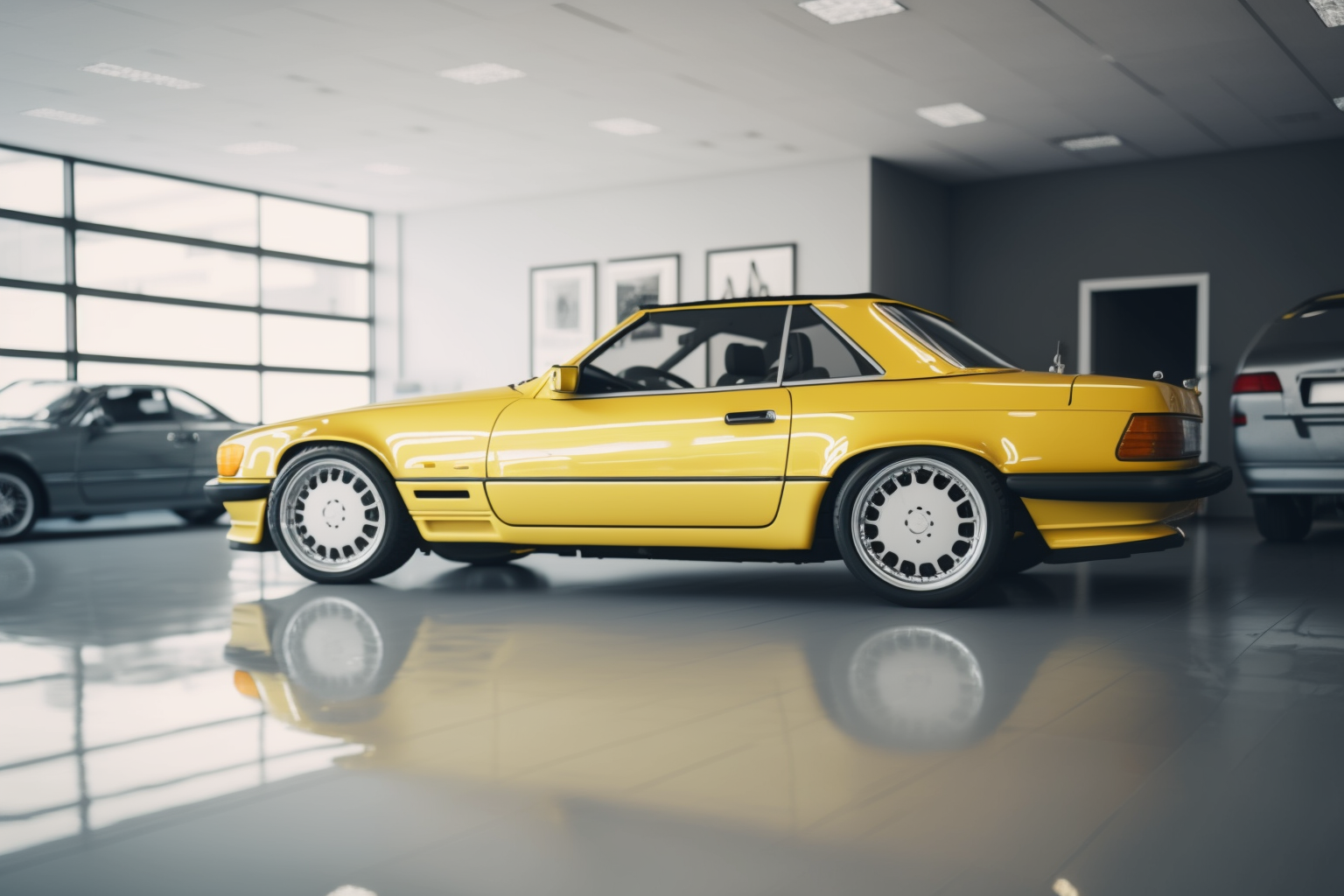Karkrub Review
Specs of the Car:
The 1993 Mercedes-Benz SL500 5.0 R129 was powered by a potent 5.0-liter V8 engine, producing around 322 horsepower and 354 lb-ft of torque. This power was delivered to the rear wheels through a 4-speed automatic transmission. In terms of performance, it could accelerate from 0 to 60 mph in a swift 6.3 seconds, with a top speed electronically limited to 155 mph. The SL500 was not only about power; its comprehensive feature list boasted advanced tech for its era, including automatic climate control, power-adjustable seats, and an advanced infotainment system.
History of the Model:
The Mercedes-Benz SL-Class has a rich lineage, tracing back to the iconic 300SL “Gullwing” of the 1950s. The R129 generation, introduced in 1989, was the third generation of the SL roadsters and replaced the R107 series. This series was produced until 2001 when it was replaced by the R230 generation. The R129 was a significant departure from its predecessor, embracing more modern design cues and technological advancements.
Development of the Model:
The development of the R129 began in 1984, and it sought to combine the best of Mercedes-Benz’s engineering and safety innovations with the allure of open-top driving. Known for its robust build quality, the R129 incorporated numerous safety features, including an automatic roll bar that would deploy in the event of a rollover. Furthermore, the model featured several engine options over its life cycle, with the SL500’s V8 being one of the most sought-after due to its balance of performance and refinement.
Journalist Reviews at the Time of Release:
Upon its release, the R129, and particularly the SL500 variant, received widespread acclaim from automotive journalists. They praised its blend of performance, luxury, and technology. The roadster’s striking design, with its clean lines and muscular stance, was seen as a refreshing evolution. The potent V8 was lauded for its smooth power delivery, making highway cruises and spirited drives equally enjoyable. However, some critics did point out its considerable weight as a slight hindrance to agility, especially when compared to some lighter sports car competitors. The build quality and attention to detail in the cabin were often highlighted, setting standards for luxury roadsters.
Types of Modifications Typically Done:
While the SL500 R129 was primarily a luxury roadster, it did attract enthusiasts who saw potential for both aesthetic and performance modifications. Common modifications included:
1. Wheels and Suspension: Upgraded alloy wheels and suspension adjustments, such as lowering springs or aftermarket coilovers, enhanced the car’s stance and road presence.
2. Performance Upgrades: Aftermarket exhaust systems were popular for a more aggressive sound and slight power boosts. Intake systems and performance chips also found their way into these cars for enhanced throttle response and power gains.
3. Exterior Modifications: Cosmetic changes like smoked tail lights, updated headlamps, and custom body kits provided a distinct and personalized appearance.
4. Interior Upgrades: Given the luxury orientation, some owners chose to upgrade or refurbish interior elements over time, including leather reupholstering, wood trim enhancements, or installing newer infotainment systems.
5. Braking Upgrades: Given the car’s weight and power, some enthusiasts opted for bigger brake kits for improved stopping power.
In summary, the 1993 Mercedes-Benz SL500 5.0 R129 stood as a testament to Mercedes-Benz’s ability to combine luxury, performance, and technology into a cohesive package. Its legacy in the SL lineage remains strong, representing a golden era of the brand’s commitment to luxury roadster excellence.
Karkrub Score
Design: 9/10
The 1993 SL500’s design was a beautiful balance of classic Mercedes elegance combined with modern design cues. Its clean lines, muscular stance, and refined detailing made it one of the most visually pleasing roadsters of its era. It captured attention without being ostentatious, blending luxury and sport seamlessly.
Power: 8.5/10
The 5.0-liter V8 engine in the SL500 churned out 322 horsepower, ensuring that it wasn’t just a pretty face. It provided brisk acceleration and effortless cruising capabilities. Its power delivery was smooth and consistent, befitting its luxury pedigree.
Fun: 8/10
While not designed as an outright sports car, the SL500 offered plenty of driving enjoyment. The growl of the V8 and the thrill of open-top driving made it a joy on open roads. However, its considerable weight did mean it wasn’t as agile as some dedicated sports cars.
Comfort: 9/10
Mercedes-Benz’s commitment to luxury was evident in the SL500. Plush seats, a well-insulated cabin (even with the top down), and a suspension tuned for comfort ensured a serene driving experience. Whether it was a short city drive or a long highway journey, the SL500 delivered exceptional comfort.
Reliability: 7.5/10
While the build quality of the SL500 was top-notch, and many units have stood the test of time, some owners reported issues with the complex hydraulic systems, especially with the convertible top mechanism. Regular maintenance was key to keeping the SL500 running smoothly.
Safety: 8.5/10
The R129 generation introduced several safety innovations, and the SL500 was no exception. Apart from the standard suite of safety features, it had an automatic roll bar that would deploy in the event of a rollover, offering added protection in a segment where safety was often a secondary consideration.
Value: 8/10
Given its luxury branding and the technology on offer, the SL500 carried a premium price tag. However, considering its blend of performance, luxury, and the prestige associated with the three-pointed star, it offered reasonable value for those seeking a luxury roadster. Over time, its classic appeal has ensured that it retains decent resale value, especially well-maintained examples.
Average Score: 8.4/10
In conclusion, the 1993 Mercedes-Benz SL500 5.0 R129 represented a pinnacle in luxury roadster design and execution during the 90s. It encapsulated the essence of what Mercedes-Benz stood for: a harmonious blend of luxury, power, and innovative technology. While it had its quirks, its overall package made it a sought-after model then and a cherished classic now. Its legacy in the automotive world remains strong, reflecting a period where luxury and elegance met the open road.

Leave a Reply